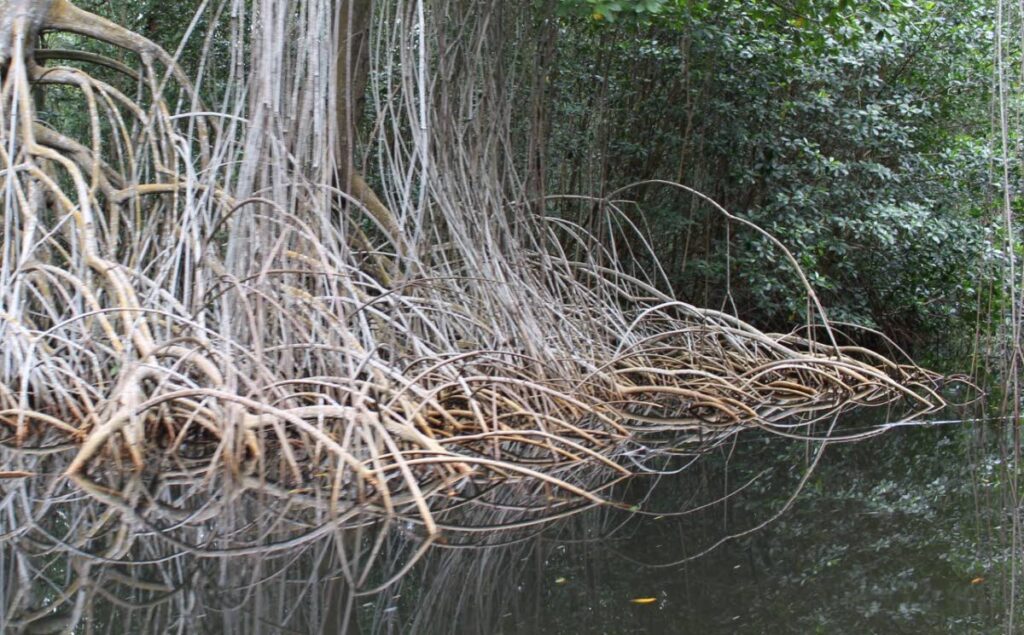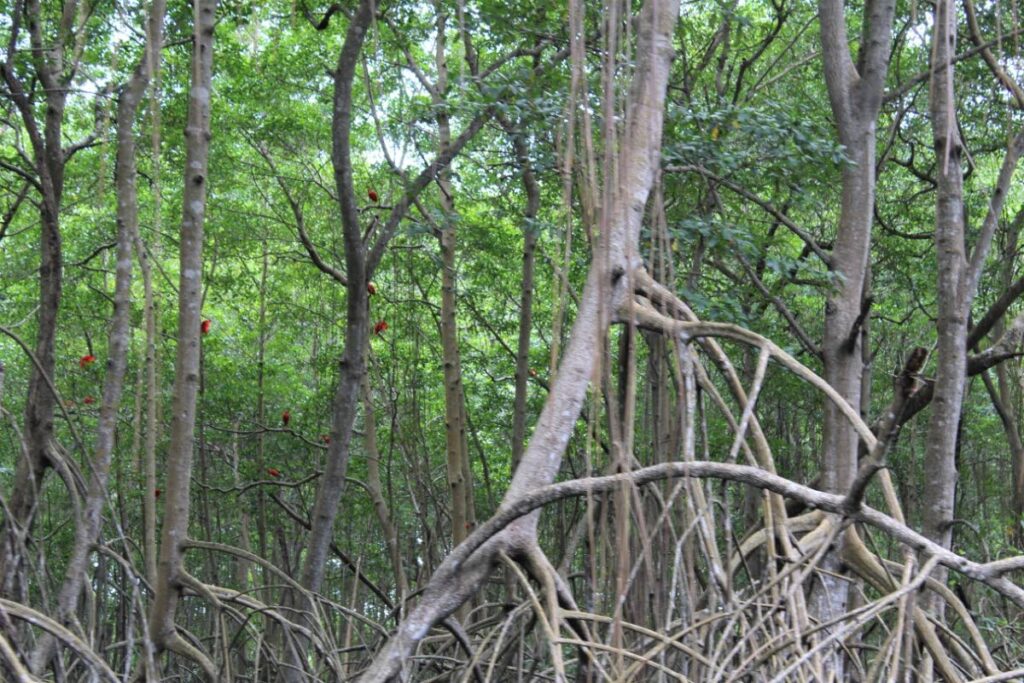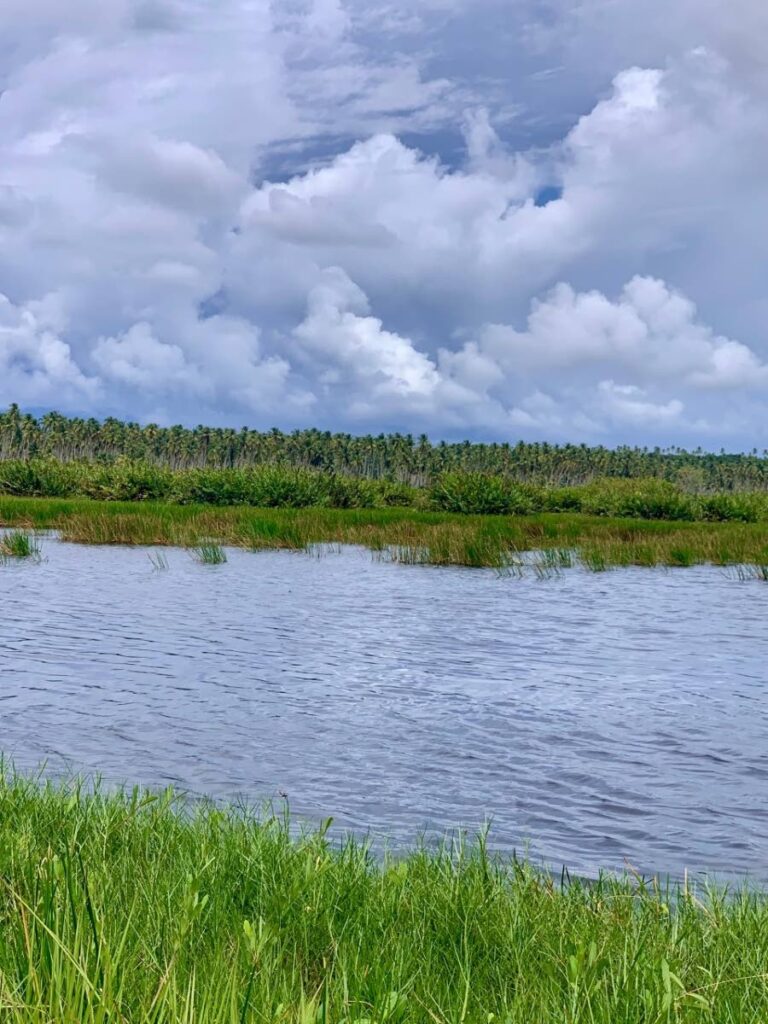Conserving pollinators, conserving our wetlands

CELESTE CHARIANDY
Science communication officer BES-Net TT
World Wetlands Day is celebrated annually on February 2. The theme of the 2022 observance is Wetlands Action for People and Nature.
Around the world and here in Trinidad and Tobago, efforts have been exercised to protect our wetland areas. These natural spaces provide many services to human and other forms of life. The Biodiversity and Ecosystems Services Network Trinidad and Tobago (BES-Net TT) project which got underway in July 2021 shares some information on an important way in which wetland areas can be assisted in thriving: through conservation of some of their smallest inhabitants – pollinators.
At last year’s launch of the BES-Net TT project, several speakers underscored the importance of pollinators in the maintenance of our local biodiversity. Pollination is critical to a plant’s production of fruit, seeds and hence, other plants. This transfer of a flower’s pollen grains to female parts of the same flower or another flower, can be carried out by wind, water or animals. In wetland areas, the expansion of mangrove forests in the terrestrial environment and seagrasses in the aquatic environment is also reliant upon the work of pollinators.

Wetland areas in TT stretch across coastal zones where they buffer the impact of storm surges. In mangrove forests, roots filter outflow and trap sediments to build the coastline, shelter juvenile stages of marine life and provide habitats for other organisms. The simple act of pollination is performed by organisms that are so important, they deserve to be highlighted and so hopefully, protected.
Pollinators in mangrove forests and their challenges
There are seven species of true mangrove plants found in our mangrove forests in both Trinidad and Tobago and of these, only four species found in Tobago. While some of these are pollinated by wind, many are pollinated by a range of organisms including bees, wasps, butterflies, moths, flies, and birds. The small, fragrant flowers produce nectar which attracts Apis mellifera, the honeybee. This insect is important to our local honey industry and honey from mangroves is highly prized.
The study of pollinators of mangroves is limited, and while information is sparse, pollinators face several threats due to activities in and surrounding these forests. Many of these forests are bordered by agricultural lands, where broad-spectrum pesticides are often used. These pesticides kill not only the target pests, but also some beneficial insects. Pesticide drift to areas outside of the farm also occurs and is worsened when incorrect application techniques are used.
Both problems can be addressed if safer, pest-specific pesticides are used on farms, using high-pressure, fine mist application techniques or by using alternative, animal-friendly pest control strategies. Consider what can happen if these farmers reduce their use of harmful pesticides and at the same time invest in rearing of bees? This would be a win-win situation for both forest and farmer!
Pollinators in seagrasses and their challenges
The seagrasses, such as the well-known turtlegrass (Thalassia testudinium) are found at a few sites in our coastal waters like Williams Bay, Chaguaramas and Bon Accord lagoon, Tobago. Many people may be surprised to know that these aquatic plants also produce pollen and that pollination is carried out not just by the movement of water, but also through the activities of aquatic animals including small crustaceans and sea slugs.
Like land plants, these seagrass communities are also impacted by various activities including sediment deposition from land-based development, agricultural runoff and pollution. Seagrasses starved of adequate light and optimum water quality will gradually decline in expanse and die off, further impacting the marine life which depends upon them, and benefits to man including marine food sources and tourism potential. If the sources of impacts are addressed, then the harmonious relationships existing in this coastal community can be sustained.

Ways to conserve
In summary therefore, conservation of our pollinator species is a key way in which the conservation of our wetland areas can be achieved. The BES-Net TT project is doing its part in this action, by addressing the lack of information on pollinators and sharing information to build public awareness of their value. This includes a survey of stingless bees in both islands, research on aquatic pollinators and development of public education materials.
Halting the use of harmful pesticides, managing our bee species, eliminating pollution, managing our land-based activities in coastal sites and building our knowledge on pollinators are simple measures by which we all can contribute to protecting our wetland areas so that they can continue to provide the important services that sustain life on our islands.
For more info on the TT component of BES-Net TT: BES-Net TT Project Management Unit Environmental Policy and Planning Division, Ministry of Planning and Development, Level 7, Tower C, International Waterfront Complex, Wrightson Road, Port of Spain, e-mail: besnet.tt@gmail.com


Comments
"Conserving pollinators, conserving our wetlands"